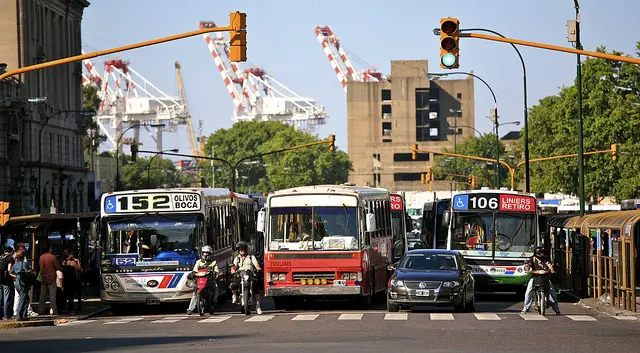How Investment in Cultural Infrastructure put Leipzig on the International Art World Map
With a long-standing legacy of alternative subculture movements and a constant re-branding of cultural identity, Berlin presents itself as the ultimate signifier of alternative urban culture. Collective community events such as the Hipster Olympiade and Mauerpark Bearpit Karaoke Show capture a sense of criticism on the commercial branding processes of cultural trends. But if you think Berlin is the only place in Germany where this type of scene has developed, think again. In Leipzig, just a few km south of Berlin, a similar development can be observed, which some critics call the ‘Hypezig’ phenomena.
Leipzig is the largest city region of the German federal state of Saxony, with about half a million inhabitants. As a popular university town, home to Johann S. Bach and church reformist Martin Luther, Leipzig has an extremely rich cultural heritage to build upon.
After German Reunification, three investors from Western Germany bought a decommissioned cotton factory, turning it into a space that now houses more than 100 contemporary artists. Many of them are internationally acclaimed, most prominently Neo Rauch who is one of the lead figures of the New Leipzig School, an emerging movement of German artists.
The Leipzig Baumwollspinnerei (in short ‘Spinnerei’), which is located in the west of Leipzig, accommodates a wealth of renowned galleries and workshops, including some of Germany’s most commercially renowned galleries: Galeries Kleindienst and Galerie Eigen+Art. This area provides an excellent professional infrastructure for commercially successful artists including a well-equipped art warehouse, exhibition space, framers and a bike repair store among others.
When Spinnerei (pictured below) was conceptualised in the early 1990s, the aim was to offer flexible studio space at a reasonable price to the many artists who had started renting derelict manufacturing spaces independently. However, due to increasing international reputation and extensive brand development, rents have now become more competitive. Despite this, emerging international artists still have the opportunity to take part in a variety of residency programs run by the Leipzig International Art Program, and other artist-led projects including Pilotenkueche.
Halle 14 is a think tank and visitor centre, and the heart of the Spinnerei. Aiming to encourage discourse about contemporary art, Halle 14 also offers a well-curated library containing books published by the institution’s internal educational department among many others. In addition to international residencies and internship programs, Halle 14 offers a range of art engagement opportunities for young people under the ‘Kreative Spinner’ programme (which translates as ‘Creative Weirdos’ and references the term Spinnerei). This programme offers workshops for local schools and classes for individuals aiming to study fine art at university level. This involves inexpensive skill-based fine art classes and studio visits with local artists.

While Leipzig’s cultural infrastructure seems small compared to global cities, the quality of the spaces and projects is extremely distinguished. This is partly because of the incredibly vast architecture these galleries and organisations use, but also through a grounded understanding of professional practice and mature artistic practices. Growing up in East Germany, I found there is still a strong notion that art education for children and adults should be accessible or even free, which also reflects in the way Halle 14 operates its engagement programmes.
I believe that long-term investment in quality art education as delivered through Leipzig Academy of Visual Art, and the provision of flexible space at Spinnerei and beyond has allowed Leipzig to establish an excellent foundation as a commercially successful visual arts hub slightly off-track from the fast-moving trends of finance-driven global cities.
With an enormous new contemporary art space opening in 2004 and an increasing number of art tours and events, media sources suggest that Leipzig has attracted many of the international collectors that regularity participate in events such as Art Basel and Frieze. With the sudden attention on the artists of the New Leipzig School, a wave of international media coverage started to break in 2005, followed by coverage in travel guides and ratings in the Guardian, NY Times and many internationally renowned German newspapers. Leipzig’s tourism agency has responded to this by creating marketing material and guides that brand ‘Creative Leipzig’ as the centre for fine and applied arts in Germany.
With these developments and the fact that Leipzig is just over an hour from Berlin by train, it seems likely that Berlin’s hype will splash over to ‘Hypezig’. While I hope this would open and internationalise the Leipzig scene, I hope that this would not result in the wholesale of Leipzig’s very own cultural distinctiveness.
For the East German area, a region often portrayed as one with high unemployment and isolated fractions of extreme right ideology, this could mean increased recognition for what is missing in much of today’s commercially over-saturated cultural landscape: authentic and purposeful long-term developments where artistic practices can mature.
Silvie Jacobi is an artist and cultural strategist studying urban geography and creative industries at King’s College London.


